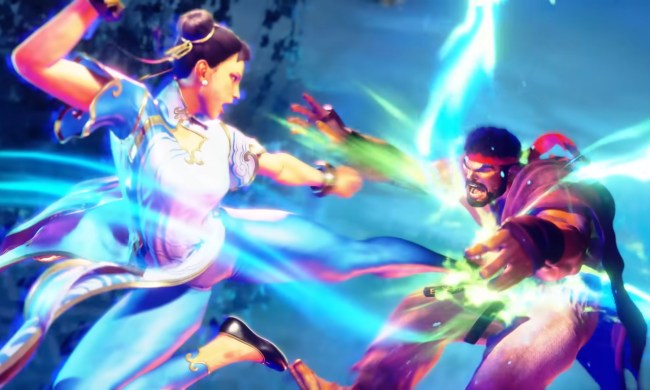While the mainstream applications of augmented reality have been pretty limited, there has been a bevy of tech demos showcasing what the technology could do with better support. One example was the AR version of Super Mario Bros. that a few folks tried out in 2017. But now, developer Abhishek Singh has made something of a sequel, this time with an updated Street Fighter II AR port.
We included a video above. It shows Singh playing the game all over the city including in parking ramps, indoors, and even on the city streets themselves. It’s powered by Apple’s nearly released ARKit for iPhone, but it’s not currently an official app, nor is there anywhere to download it for yourself. Even so, it’s a remarkably well-executed concept that Singh claims was a tribute to his younger years.
“I loved playing this game on an actual arcade as a kid with my sister and wanted to experiment with multiplayer shared AR experiences, and this kinda just popped in my head,” Singh told CNET. “Also realized the linear motion would work well in this kind of shared experience and I also thought it would look cool.”
Even better, perhaps, is that the whole thing even has multiplayer support — a rarity for AR games.
“One player sets up the stage by pointing their phone at any flat surface (streets, tables, etc.), the stage automatically adjusts for smaller surfaces and then the second person points their own phone at the same surface and joins in,” Singh said. He describes it as digital gladiatorial combat wherever you want it.
“I hope to release it publicly but need to figure out copyright issues with Capcom before doing anything,” Singh told Digital Trends in an email. “I enjoy AR, think it has a lot of potential to create amazing experiences and bring experience to life in our world, so while I am bullish on it’s future, only mass consumer adoption can guarantee that and we aren’t quite there yet.”
The Game Developer’s Conference as well as its companion, the Virtual Reality Developer’s Conference, take place in San Francisco next week. The two conferences should bring a wave of new game announcements and similar projects that could prove to be pretty compelling in their own right. But for now, this is perhaps one of the more impressive implementations of the technology.


